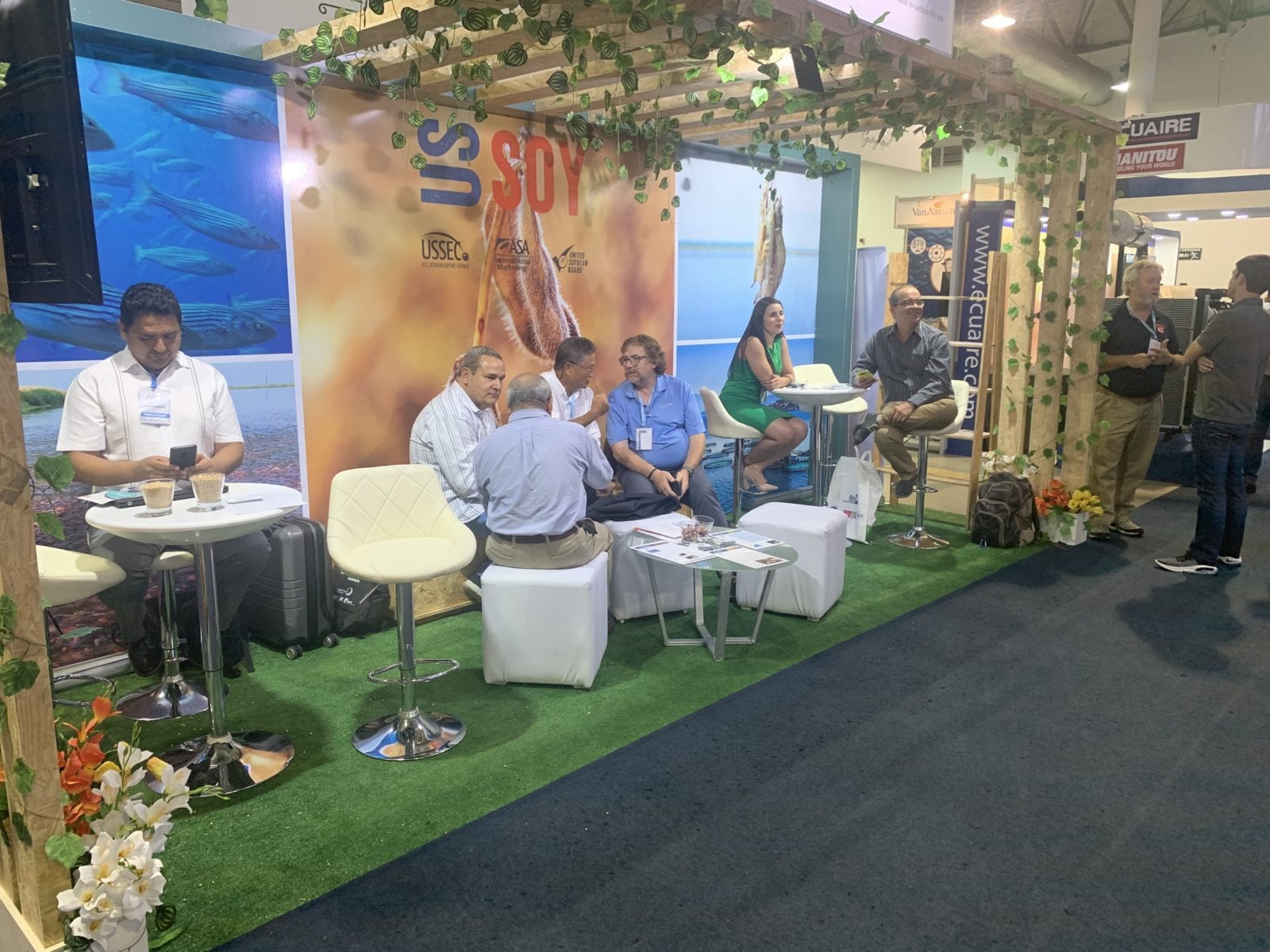Ecuadorian Shrimp Producers Find Out More about Sustainable U.S. Soy at Aquaexpo 2019
- Category:
- Aquaculture
- General News

USSEC attended and actively participated at the annual Aquaexpo 2019 in Guayaquil, Ecuador organized by the National Aquaculture Chamber (CNA). This year, Ecuador’s shrimp production is expected to be more than 630,000 metric tons (MT), using more than 300,000 MT of soy products.
USSEC consultants Dr. Allen Davis and David Kawahigashi gave specialized lectures to more than 1800 participants from the area’s shrimp industry, providing technical support. Dr. Davis focused on sustainable feed for shrimp and best feeding practices, and Mr. Kawahigashi spoke about sustainable shrimp production under innovative production systems. Additionally, both of them provided technical support and valuable information to staff from shrimp farms, customers of leading Ecuadorian manufacturers of shrimp feeds.
Shrimp farms were visited around the Gulf of Guayaquil, the country’s main production area. Discussions with growers at each farm were informal and relevant to the particular concerns of each owner or technical manager. Topics included basic nutrition, feed management, specialized tools, recirculating pond systems, aeration requirements and practices, water exchange, and improving production efficiency. Prior to the start of each farm meeting, USSEC’s role in promoting the use of U.S. soybean meal in aquafeeds used to support shrimp farming in Ecuador was explained.
At the USSEC booth during the Expo, the U.S. Soy Sustainability Assurance Protocol (SSAP) was promoted, along with different products used in aqua nutrition. Special mention was made about fermented soybean meal produced by a USSEC member in the U.S. and another cooperator in Costa Rica, which has had excellent reception within the industry due to its quality and immediate availability. At this stage, as the global aqua and feed industries are looking for solutions to replace expensive animal protein ingredients, recent developments in fermentation technology proved that this process is enhancing the nutritional properties of vegetal protein ingredients and is diminishing the anti-nutritional factors. This is particularly true for the trypsin inhibitors reduction from soy to levels that are nearly undetectable by laboratory analysis. Fermented soy can be produced several ways and offers potential high value across aqua and livestock species.
The event in Ecuador provided a positive exposure of USSEC not only to key players in the shrimp production, aquaculture feed, and ingredient supply, but also to the entire aqua industry sector of a country that has gotten the world’s attention by substantially increasing its aquaculture production. Ecuador is the third largest global shrimp producing country, a true leader in production and development who is generally seen as a leader and a reference in the feeding and nutrition of this species. With a continuously and rapidly developing aquaculture sector, progress shown in the inclusion of soy and soy derived products in aquafeeds will be soon reproduced in other nearby shrimp producing countries of the region.
USSEC’s efforts to support this activity demonstrated the commitment of the U.S. soy industry to shrimp production in Ecuador’s growing aquaculture and aquafeed industries. The organization’s participation and commitment translated into USSEC becoming the winner of an award given to the best booths for its promotion and number of visits during the Expo.
